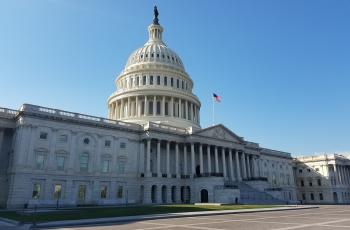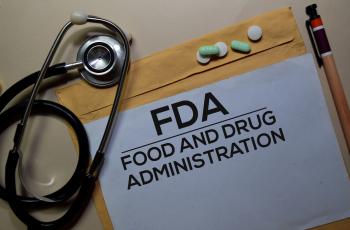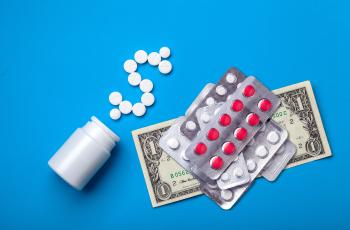‘Pharmacy Deserts’ Will Affect COVID-19 Vaccine Rollouts and Widen Health Disparities
Similar to food deserts, pharmacy deserts are areas where pharmacies are difficult to access without adequate transportation. Many people with diabetes rely on pharmacies to access vital healthcare, medications, and devices. Pharmacy deserts in rural and underserved communities widen health disparities by limiting access to healthcare for those who need it most.
The most common attempts to explain disparities in health outcomes have focused primarily on affordability. While the affordability of medication and healthcare services is a major issue, geographic regions that lack sufficient numbers of pharmacies are another major barrier to good health.
Dima Qato, Associate Professor at the University of Southern California School of Pharmacy, was the first to coin the term “pharmacy desert” in 2014. She defined it as a geographic area where residents without cars cannot fill a prescription within a half-a-mile of their homes, or a mile for those with cars. Just as food deserts limit access to healthy foods, pharmacy deserts limit access to medications, vaccinations, and essential services.
While Qato’s definition generally applies to urban pharmacy deserts, which are the result of insurance restrictions that limit which pharmacies an individual can use, rural pharmacy deserts are areas with low population density that don’t have any pharmacies nearby, let alone within a one mile radius.
How common are pharmacy deserts?
In her research in Chicago, Qato estimates that about one-third of the population lives in a pharmacy desert. However, the prevalence of pharmacy deserts is much higher in areas where the majority of the population are low-income people of color. Qato found that from 2000-2012, the number of pharmacies in segregated white communities in Chicago increased by 30 percent, while the number of pharmacies in segregated black and Hispanic communities decreased by 11 and 17 percent, respectively. Further, pharmacy deserts disproportionately occurred in segregated Black neighborhoods – 54 percent of segregated Black neighborhoods in Chicago were pharmacy deserts, whereas only 5 percent of segregated white neighborhoods were pharmacy deserts.
Why should we care about pharmacy deserts?
Local pharmacies ensure community access to prescription and over-the-counter medications. Pharmacies also provide communities with information, resources, and diagnostic, preventive, and urgent care services.
Further, during the COVID-19 pandemic, pharmacies have become a major hub for COVID-19 vaccinations. Pharmacy deserts can thus threaten a widespread vaccine rollout and increase vaccine waiting times at the few pharmacies that do exist because they must serve more people. Additionally, because pharmacy deserts are more common in low-income and minority neighborhoods – communities who have been hit the hardest by COVID-19 – these “vaccine deserts” will widen health disparities.
The pandemic has also accelerated the prevalence of pharmacy deserts, as pharmacies that serve low-income populations have become less profitable and eventually close their doors.
Most recently in December 2020, people on Medicaid in Illinois have also found that they can no longer get their prescriptions filled at Walgreens, a major pharmacy chain in the area. This is because the insurance company Aetna, which is owned by rival pharmacy chain CVS, decided to drop Walgreens as a Medicaid provider. While people on Medicaid can still get their prescriptions filled at CVS pharmacies, the Chicago Tribune reports that there are no CVS pharmacies in five key West side neighborhoods in Chicago.
Because Medicaid dictates where people can and cannot pick up their prescriptions, Medicaid policies like the one in Illinois can have detrimental effects on pharmacies. Pharmacies not included as a Medicaid provider will have less patients in them, which can lead to less profits and even eventual closure. This is especially true in neighborhoods with more low-income people who are more likely to be on Medicaid, meaning pharmacies are closing in areas already hit hard by the pandemic.
What are the impacts of pharmacy deserts?
Pharmacy deserts force people to travel greater distances, which can be especially hard for those without reliable means of transportation. Moreover, pharmacy deserts can affect continuity of care, particularly when a patient is forced to change from one pharmacy to another.
“Pharmacists are among the most accessible healthcare providers and, having worked in that setting myself, I know firsthand that it can be extremely disruptive for some patients with complex medical conditions to be forced to switch pharmacies/pharmacists on an annual basis because of insurance restrictions,” says Damian Bialonczyk PharmD, Director of Medical Affairs at Gelesis.
Making it more difficult to get to a pharmacy can also reduce the overall number of interactions an individual may have with their pharmacist. This is problematic for several reasons. First, many people rely on their pharmacists more than their primary care providers for support. In a 2020 study of over 600,000 Medicare beneficiaries, the median number of visits to community pharmacies was significantly higher than visits with primary care physicians (13 vs 7).
Second, a patient’s personal connection with a pharmacist or pharmacy staff is the top predictor of medication adherence. Third, as one of the last people to interact with patients in the chain of care, pharmacists play a large role in educating people on their diagnoses and medications – education that has been correlated with improvements in A1C and medical cost savings.
Accordingly, research has found a correlation between pharmacy closures and people discontinuing their medication. Unsurprisingly, this also leads to worse health outcomes. For example, one study found that adults over 50 were significantly more likely to stop using their cardiovascular pills after their local drug store shut down. Like cardiovascular disease, diabetes often requires regular medication refills, such as insulin.
By closing down pharmacies and requiring people to travel farther and longer to receive their medication, pharmacy deserts will likely lead to more cases of insulin rationing, medication nonadherence, and worse health outcomes.
What can we do about it?
The populations most burdened by chronic diseases are the most impacted by pharmacy deserts.
In order to effectively increase access to healthcare, public policies ought to look beyond insurance coverage and affordability. Residential segregation and uneven distributions of pharmacies and grocery stores are increasingly coming to light as major drivers of health disparities.
Several initiatives have been put into place to increase access to healthy food, such as creating incentives for grocers to expand to low-income neighborhoods, and diaTribe believes that similar programs and incentive structures would benefit pharmacy expansion and healthcare access. Transportation systems should also be reviewed and strengthened to increase ease of traveling to existing pharmacies.
Another solution includes increasing the number of people who use mail-order pharmacies that can mail medications straight to your doorstep. The benefits of mail-order pharmacies are that medications can often be mailed in bulk, requiring fewer refills, and many mail-order pharmacies offer 24/7 service through their website or by telephone so people can still get their questions and concerns answered.
However, mail-order pharmacies do not solve the whole problem.
“The increasing prevalence of mail order pharmacies and ‘telepharmacy’ services are helping curb the issue of medication distribution, but they don’t really address the issue of access to a pharmacist for services like immunizations,” says Bialonczyk.
Moreover, according to market research firm dQ&A, mail-order and online pharmacies have lower levels of diabetes customer satisfaction, compared to physical pharmacies. Additionally, dQ&A found that even major pharmacies like Walgreens and CVS are failing to meet the needs of people with diabetes.
When it comes to increasing pharmacy access, both quality and quantity matter. People with diabetes in underserved communities need improved access to pharmacies and their vital health services. Incentivizing pharmacy construction in low-income and rural communities, supporting existing pharmacies, and strengthening mail-order pharmacy options will decrease the prevalence of pharmacy deserts and bring improved healthcare to those who need it most.


